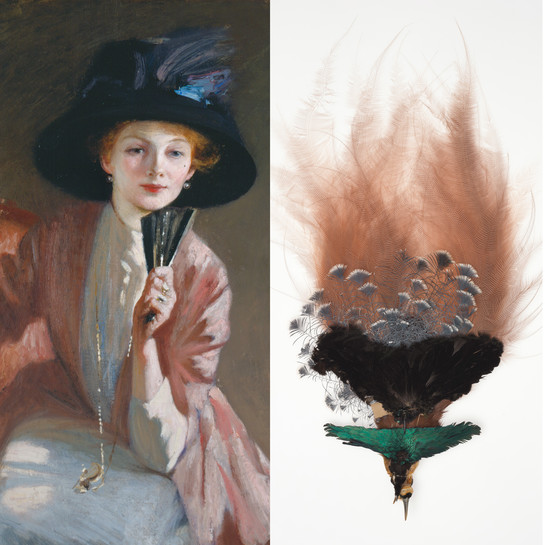Charles L. Hartwell
British, b.1873, d.1951
The Lass Of Dee
- 1902
- Bronze
- Presented by the Canterbury Society of Arts, 1932
- 477 x 130 x 142mm
- 69/558
Tags: cloaks, deaths, heroines, people (agents), poetry, storms, women (female humans), words
Many works in the 1906–07 New Zealand International Exhibition, including Charles Hartwell’s The Lass of Dee, had been exhibited in Britain earlier; this statuette was shown at the Royal Academy’s annual summer show in London and the Walker Art Gallery’s autumn show in Liverpool in 1902. Hartwell was the son of a London butcher and began his art training in his early twenties. He made this piece while completing his studies at the Royal Academy Schools in 1902, and was invited to join the prestigious Royal Society of British Sculptors three years later.
Ship Nails and Tail Feathers, 10 June – 22 October 2023
Exhibition History
(Storytellers, November 2010 – June 2011
This statuette portrays the lost heroine of Charles Kingsley’s famous poem, ‘The Sands of Dee’, calling out as she wanders alone on the seashore, lost in the rolling mist. The deep folds of her cloak show her battle with the elements and the bared shoulder adds to the sense of her vulnerability:
The western wind was wild and dark with foam
And all alone she went
She was swept out to sea and after her body was recovered some believed that her voice could still be heard:
They rowed her in across the rolling foam,
The cruel crawling foam,
The cruel hungry foam,
To her grave beside the sea.
But still the boatmen hear her call the cattle home
Across the sands of Dee.
Charles Hartwell has inscribed some of the words of the poem around the base of his sculpture.
The subject directly illustrates the passage:
“The western wind was wild and dark with foam and all alone went she, The falling mist came down and hid the land and never home came she”.
Lost in the mist she called out but was not heard.
The artist Charles Hartwell was a sculptor, largely of portrait and figurative subjects worked either in bronze or marble.
Born in London, he studied at City and Guild Schools, Kensington where he won a silver medal for sculpture, and in 1896, bronze and silver medals from the Royal Academy schools.
Hartwell exhibited regularly at Royal Academy, London, exhibitions from 1900-1950 and became a well-known bronze portrait sculptor.
The Lass of Dee was exhibited at the Royal Academy in 1902 and was brought to New Zealand in 1906 as an exhibit in the New Zealand International Exhibition, Christchurch. It was subsequently purchased by the Canterbury Society of Arts in 1907. (Before 2003)



